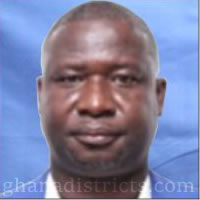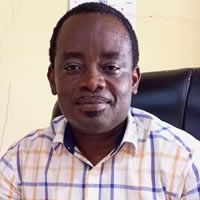Child Labour
Records available at the District Social Welfare Department show that 55 children are engaged in exploitative child labour in our rural communities to meet some needs of their respective families. These children are made up of 23 girls and 32 boys. They are engaged in economic activities like trading and farming instead of receiving formal education and training, which would be point for their development in future.
Orphans and other Vulnerable Children
There are many orphans and vulnerable children who are in need of care and protection in the district. Data collected by the DPCU in all pre-schools in 2005 revealed that there were 354 orphans in pre-school in the district. A similar exercise conducted in JSS in the district also revealed that 461 JSS pupils were needy.
The break down according to Area Councils is presented in table 48. There is the need to monitor closely the growth and development of these in school needy and orphaned children and also locate those out of school for support so as to protect them from exposures that have the potential of destroying their lives and future aspirations.
Persons with Disabilities:
Integrating persons with disabilities (PWDs) in the main-stream of social and economic lye of the district would significantly contribute to achieve the government’s vision of poverty reduction, employment creation and improvement in rural incomes. There is, therefore, the need for the full utilization of the entire human resources.
Records obtained from the District Department of Social Welfare indicates that, there are 82 persons with disabilities who have been located and registered officially for inclusion in the register of persons with disabilities There may be a lot more people with such disabilities in the district but parents and relatives prefer hiding their disabilities than exposing them. Moreover, there are no existing support programmes for PWDs in the district, and so there is no incentive for PWDs public exposure.
There is the need for the District Social Welfare Department in collaboration with the District Assembly and other departments locate all PWDs in the district and identify their specific needs and support them.
PLWHAS
The larger Atwima District from which this new District (Nwabiagya) emerged is ranked third in HIV/AIDS reported cases in the Ashanti Region. The peak age of recorded cases is 35-39. The District Assembly is concerned about the people in this age bracket because they constitute the most reproductive as well as the most economically active population. Considering her proximity to the Kumasi Metropolis, the prevalence rate for Kumasi 3.5% has been assumed. There may be communities with higher rates when you consider the rate of development of settlements and other predisposing factors.
The very small number of recorded cases at the District facilities is due to the fact that most of the infected persons prefer to seek services from either Kumasi, Bibiani or from other private health facilities for various reasons including fear of stigmatization.
People living with HIV/Aids are facing problems of discrimination and would there require measures that will help integrate them into the broader society. They also need to stay healthy and would therefore sustainable counseling, income, diet and drugs. Some NGOs and CBOs are doing care and support for PLWHAs. Some of the PLWHAs are on ART from Komfo Anokye Teaching Hospital and are responding to treatment.
There are still people who seek herbal treatment or spiritual intervention to avoid being stigmatized. The Regional Co-ordinating Council (RCC) in collaboration with World Health Organisation (WHO), also trained community counselors who offered numerous services to PLWHAs and their dependants.
The SAAFC supported AIDS orphans and other children with educational materials and clothing to enable them attend basic schools. Another set of children also received similar support under the WHO/RCC collaborative programme.
Periodic meetings of the PLWHAs were used to provide indebt information about the epidemic. In spite of these efforts, the PLWHAs preferred to remain anonymous to prevent being stigmatized and discriminated against.
Measures are required for the integration of the PLWHAs and to provide a sustainable support base and also protect other more vulnerable groups like hawkers, barbers, Chop bar keepers, apprentices, truck pushers, commuters, youth, children, single parents, students etc from contracting the diseases.
People in Disaster Prone Areas
The main disaster prone area of the district is the Owabi community, which is located down stream of the Owabi dam. The community is exposed to annual flooding due to spill over from the dam. Property such as, buildings and crops are annually lost. Other disaster prone areas include built up areas at Abuakwa, Sepaase, Bokankye, Manhyia and Asenemanso.
There is congestion of physical structures, placement of structures on lanes and water ways and illegal electricity connections of electricity resulting in frequent outbreak of domestic fires. Achiase, Adankwame, Abrafo Kokobeng, Atwim Koforidua, Kobeng and Seidi are noted for frequent rainstorms which result in rip off and collapse of buildings.
Measures are required to relocate the Owabi settlement. There is the need to control haphazard development in towns and to check illegal connection of utilities. There is also the need for the use of good quality building materials and expects in the building industry, periodically maintain buildings and plant protective vegetation in settlements to reduce the impact of storms on buildings.
Date Created : 11/24/2017 6:25:37 AM





 facebook
facebook X (twitter)
X (twitter) Youtube
Youtube +233 593 831 280
+233 593 831 280 0800 430 430
0800 430 430 GPS: GE-231-4383
GPS: GE-231-4383 info@ghanadistricts.com
info@ghanadistricts.com Box GP1044, Accra, Ghana
Box GP1044, Accra, Ghana